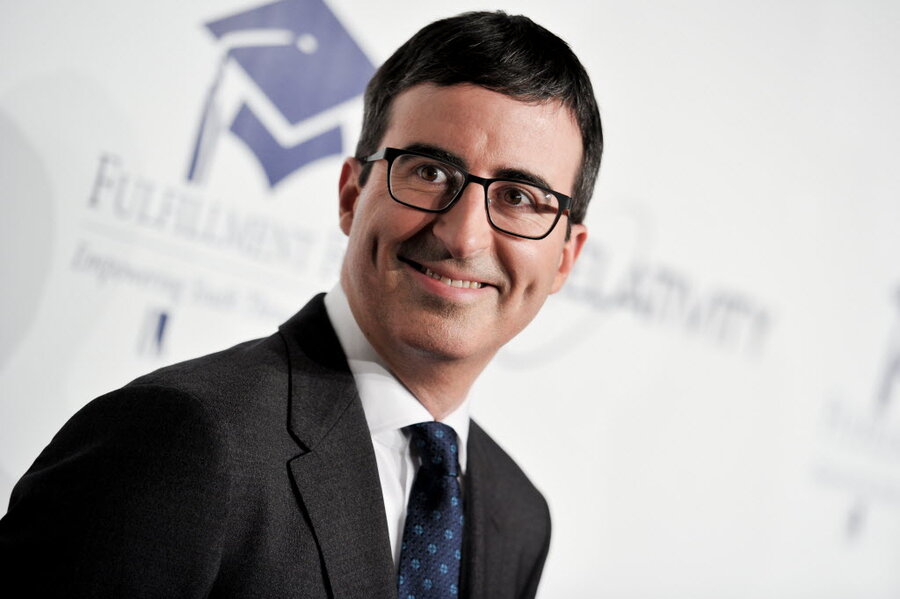Why John Oliver has everyone talking about food waste
Loading...
“Celebrating America often goes hand in hand with celebrating its food,” said comedian John Oliver during his episode of Last Week Tonight on Sunday.
After introducing his discussion by poking fun at American restaurant commercials, Mr. Oliver quickly got to the meat of the matter: food waste in the US is no joke.
Discarding food comes with plenty of negative consequences, and the English comedian outlined many of them with just enough humor to keep viewers interested, without undermining the gravity of the issue.
Oliver cited a 2012 report by the Natural Resources Defense Council (NRDC) that says 40 percent of food in the US today goes uneaten.
“This not only means that Americans are throwing out the equivalent of $165 billion each year,” the report reads, “but also that the uneaten food ends up rotting in landfills as the single largest component of US municipal solid waste where it accounts for a large portion of US methane emissions.” Food waste not only puts stress on the American economy, but on the environment.
Oliver also pointed out that the US has serious problems with hunger. He referred to a USDA report from 2014 that said nearly 50 million people lived in food-insecure households in 2013. That means almost 18 million families struggled to provide enough food for all of their members at some time during the year.
If the country reduced losses by just 15 percent, it would supply enough food to feed more than 25 million Americans every year, says the NRDC.
Oliver went on to point out other consequences that require urgent attention. When the nation dumps nearly a third of its food every year, it’s “wasting all the labor and natural resources that went into making it,” he says.
“It seems especially unwise that farmers are pumping water into food that ends up being used as a garnish for landfill,” he says, referring to California’s drought crisis.
But why exactly is so much food being discarded?
Tracking food waste patterns is a complicated process – from the moment food is produced until it’s dumped into a landfill. According to the USDA, a relatively large share of food loss in developed countries occurs at the consumer end of the spectrum.
“Consumers typically demand a wide variety of high-quality, cosmetically appealing, and convenient foods,” wrote the USDA in 2014. “As a result, blemished, misshapen, or wrong-sized foods are often discarded to meet minimum quality standards.”
Not only do Americans excessively “body-shame” their produce, Oliver says, they also throw a huge portion of it away out of fear. The “use-by,” “best-before,” and “sell-by” dates on products confuse many shoppers who often end up throwing away perfectly healthy food.
According to the USDA, sell-by dates are designed to help stores with stocking procedures and ensure freshness to consumers. As Oliver puts it, “Most of the time, sell-by dates are one of those things that look official, but you can probably ignore.”
His informative discussion debunked several other myths tied to food waste issues. But more importantly, it suggested that every American has a responsibility to be a thoughtful consumer.
“We all have to address our relationship with food waste,” Oliver concluded.






